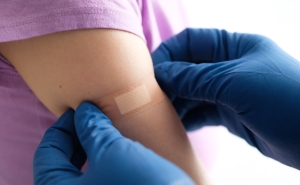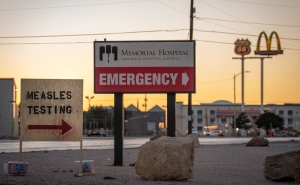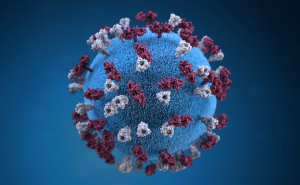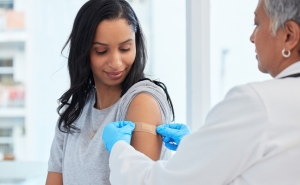Risk of Breakthrough COVID-19 Infection After Vaccination Is Higher Among People with HIV
Finding, based on analysis through December 31, 2021, suggests that all people with HIV might benefit from additional dose in primary vaccination
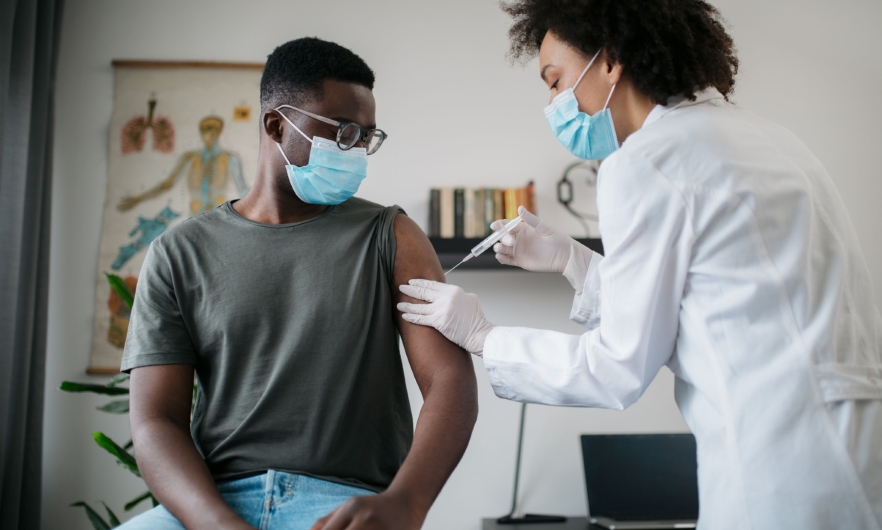
People with HIV have a higher rate of breakthrough COVID-19 infections after vaccination, compared to people without HIV, according to findings from a study led by researchers at the Johns Hopkins Bloomberg School of Public Health.
In the study, the researchers analyzed anonymized health records among nearly 114,000 people fully vaccinated with either two doses of mRNA vaccines or one dose of the J&J viral vector vaccine as of June 30, 2021 through December 31, 2021. Comparing vaccine recipients with and without HIV, the researchers found that the chance of a positive SARS-CoV-2 test result or a COVID-19 diagnosis within nine months after full vaccination, though low, was 28 percent higher among people with HIV. The risk of breakthrough infection during the period examined was 3.8 percent for the non-HIV group and 4.4 percent for the HIV group.
The results are published June 7 in JAMA Network Open.
“These findings should alert all people with HIV to their greater risk of COVID-19 breakthrough, and can inform official recommendations about COVID-19 vaccination for people with HIV,” says study senior author Keri Althoff, PhD, associate professor in the Bloomberg School’s Department of Epidemiology.
Public health officials have had concerns about potentially elevated COVID-19 risk among people with weakened immune systems, including those with HIV, since the start of the pandemic. The Centers for Disease Control and Prevention currently recommends that people who are “moderately or severely immunocompromised”—a category that includes people with HIV who are untreated or have low CD4 T-cell counts (<200 cells per microliter)—receive an extra dose of vaccine as part of their primary vaccination series, followed by a booster. Studies so far have generated relatively little data on vaccination outcomes for people with HIV.
For their study, Althoff and her colleagues pooled individual-level data from four health systems in the U.S., to create a study population named the Corona-Infectious-Virus Epidemiology Team (CIVET) cohort. The CIVET cohort contains de-identified records from private health insurers, the Veterans Affairs health care system, and an academic-affiliated health system. Patients in the study population had been receiving care for various conditions prior to the COVID-19 pandemic. The researchers examined the records of 113,994 people who had been fully vaccinated by June 30, 2021. Matching the 33,029 HIV-positive patients in the sample with the 80,965 HIV-negative patients (on age, race, sex, and date fully vaccinated), they compared the two groups’ rates of SARS-CoV-2 breakthrough infections during the first nine months post-vaccination, or up to December 31, 2021, whichever came first.
The rates of breakthrough—3.8 percent for the non-HIV group and 4.4 percent for the HIV group—are much lower than the rate of COVID-19 in unvaccinated people, suggesting a strong protective effect of vaccination. However, the analysis indicated the overall risk of breakthrough infection was 28 percent higher for the HIV group compared to the non-HIV group, after adjusting for differences between the groups.
Moreover, the study found an increasing risk of breakthrough with increasing immune suppression, measured via decreasing CD4 counts. Those with CD4 counts that signal moderate immune suppression in people with HIV—in the 200-350 cells/mm3 range—had a statistically significant increase in the risk of breakthrough compared to people without HIV. That suggests, Althoff says, that people with HIV and moderate immune suppression may need to be included in the CDC’s guidelines for additional doses of vaccine in the primary vaccination series.
“Policymakers who establish the guidelines should consider the benefits and risks of an additional dose of vaccine in the primary series not only for those with severe or untreated HIV, but also include those with moderate immune suppression or even all persons with HIV,” says study first author Sally Coburn PhD, post-doctoral fellow in the Bloomberg School’s Department of Epidemiology.
Althoff and colleagues are following up with a study to determine whether vaccinated people with HIV have not only higher breakthrough infection rates but also higher hospitalization rates after breakthrough infection.
“Analysis of post-vaccination breakthrough COVID-19 infections among Adults with HIV in the United States” was co-authored by Sally Coburn, Elizabeth Humes, Raynell Lang, Cameron Stewart, Brenna Hogan, Kelly Gebo, Sonia Napravnik, Jessie Edwards, Lindsay Browne, Lesley Park, Amy Justice, Kirsha Gordon, Michael Horberg, Julia Certa, Eric Watson, Celeena Jefferson, Michael Silverberg, Jacek Skarbinski, Wendy Leyden, Carolyn Williams, and Keri Althoff.
The study was funded under the North American AIDS Cohort Collaboration on Research and Design (NA-ACCORD, U01AI069918) from the National Institute of Allergy and Infectious Diseases, part of the National Institutes of Health.
# # #
Media contacts: Jonathan Eichberger at je@jhu.edu and Carly Kempler at ckemple2@jhu.edu.

